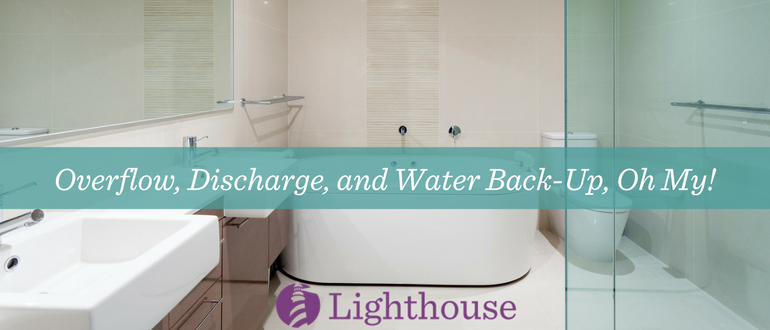As unfamiliar blankets of snow cover the South, more homeowners are suffering from water losses. The Weather Channel’s tips for winter home safety 1, such as keeping a trickle of water flowing through faucets connected to pipes, could help protect your home.
Unfortunately, while winter home safety tips might come in handy, frozen pipes, water back-up and icy roofs still occur. Once the damage is done, it can become challenging to figure out what is and isn’t covered under your homeowners policy. Water losses are a confusing and commonly misunderstood type of property claim. What’s defined as a water back-up versus an overflow or discharge? In order to figure out what’s covered under your policy, it’s important to understand the difference between these water damages and what can cause them.
Defining Overflow, Discharge and Back-up
An overflow simply occurs when water goes beyond its limits. For example, when a bathtub overflows and continues to spread to the bathroom floor is considered an overflow.
Discharge occurs when water is flowing out, such as a leaking pipe. There is no blockage or overflow, but it is simply leaking in the wrong spot.
Back-up is caused by a blockage in the plumping or water-flow creating a barrier that prevents the water from continuing down its path. This ultimately causes the water to flow in the reverse direction. Back-ups can be the result of disposing greases in your kitchen drain or flushing paper towels down the toilet.
What’s covered under a Homeowners Insurance Policy?
In an homeowners insurance policy (HO3), coverage is provided for water damage as a result of discharge or overflow from plumbing, heating, air conditioning or household appliances on the resident’s premises 1. This includes leaking pipes behind walls, under floors and in ceilings. Overflow of dishwashers, toilets or washing machines at the insured location and of storm drains off premises, if caused by high rains or floods, are also covered. Off premises coverages include discharge or overflow of storm drains, water, steam and sewer pipes.
This coverage includes the repair and replacement for the damaged property including floors, walls, tiling, carpet and other areas that need repair after being saturated, up to the policy limit. It even covers the hole in your wall created to repair a leaking pipe! However, it does not cover the leaking pipe; leaking pipes are a maintenance item and wear and tear or aging of the system are not covered under a homeowners policy. Damages from back-ups through sewers or drains, overflows or discharges from sumps, sump pumps and related equipment are also excluded.
Because water is a key issue in homeowners policies, it’s essential to understand your coverages. Be sure to review your coverage and contact your agent to ask how an optional Water Back-Up or Overflow endorsement can help you!
Source:1The Weather Channel
Source:2Property Casualty 360

